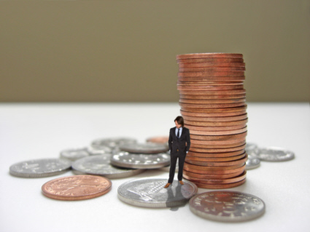- Diversification of Libya’s economy – make hay while the sun shines
- 19.04.13
With China reporting slower growth than expected, the IMF lowering its outlook for US growth from 2.1 to 1.9 percent, the Euro countries expected to contract by 0.3 percent as well as world economic growth downgraded to 3.3 percent for 2013, down from 3.5 percent, oil prices fell sharply this week.
This hydrocarbon price fall has also been put into perspective by the increased oil and gas production in the United States. This increase has been almost totally from the new revolution in production from the so called shale rock sector. These new sources of production have been triggered by the steady high price of hydrocarbons over the last few years, which have made their exploration economical.
Some analysts are speculating that if progress in production continues at the same rate, not only will the US become a net hydrocarbon exporter, with all the ramifications that may have on its MENA foreign policy, but could cause a long period of low international hydrocarbon prices.
- If this doom scenario materialises – a long period of low international hydrocarbon prices – this could anticipate a long period of slow economic growth for oil exporting countries, including Libya. Libya’s economy depends for hydrocarbons for over 85 percent of its revenue. In transition from a revolution and 40 years of under-development, Libya was looking forward to increased hydrocarbon production and steady world crude prices at around the $100 mark to fund its ambitious development programmes.
In 2013, Libya announced a budget of LD 66.86 billion with 31 percent going to salaries, 16 percent to subsidies and 28 percent for development and reconstruction projects. As things stand, a 10 to 20 percent fall in international crude prices would stunt Libyan development considerably at the very time when it would have been hoping to ramp up investment and development to try to catch-up with its peers.
Following the February 17 Revolution, Libya was hoping to set off on a programme of economic diversification and subsidy reform. It was hoping to decentralise, shrink the inefficient and unproductive state-sector and reduce its over-dependency on hydrocarbons by creating new sources of revenues. It was hoping to resume its $150-billion infrastructure projects development programme. It was hoping to either complete or start on its numerous airports, roads, sewerage, water, electricity, renewable energy, desalinisation, housing, health, education and administrative buildings projects. Equally, Libya needs to diversify its economy in order to create employment.
Whilst Libya’s hydrocarbon sector is the dominant revenue earner – and will most likely remain so for decades to come – it is not a huge creator of employment. Therefore, Libya needs to diversify its economy into sectors that are high or at least higher creators of employment such as the services sector, tourism, some light industry, some food production, some agriculture, transport, trade, banking etc.
- But more pertinently, Libya needs to diversify its economy in order to create urgently needed jobs for the many arms-wielding young thuwar (militiamen) who are looking to their new political authorities awaiting a better fate than that they had endured under the dictator. But the nascent democratic Libya also needed to diversify and create jobs in order to show that democracy indeed works – and in the long term works better than dictatorship. However, the world is not and will not stand still and wait for Libya to diversify its economy.
The international political and economic environment is ever changing – including the demand, supply and price of world hydrocarbon prices. Libya must not and cannot take its hydrocarbon sources of revenues for granted. Libya’s politicians and authorities need to be focused. They, unlike the non-net oil exporters Tunisia and Egypt, are blessed with an opportunity afforded to them by the surpluses created from oil. This window of opportunity is finite, and could close at any time. These surpluses cannot be wasted away on wages and subsidies. They need to be invested today – not tomorrow – in development projects that bring a return investment and create alternative national incomes to hydrocarbons.
In short, Libya must urgently make hay while its sun shines!
(Source: Libya Herald)




